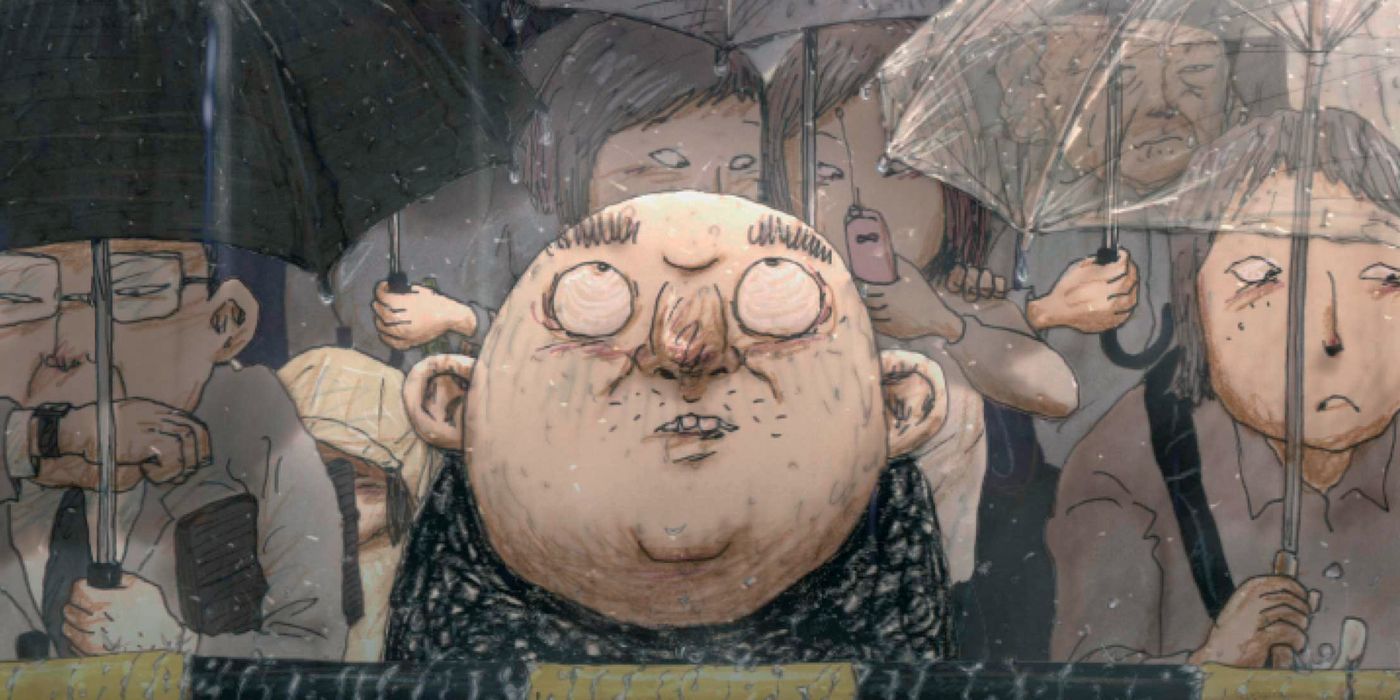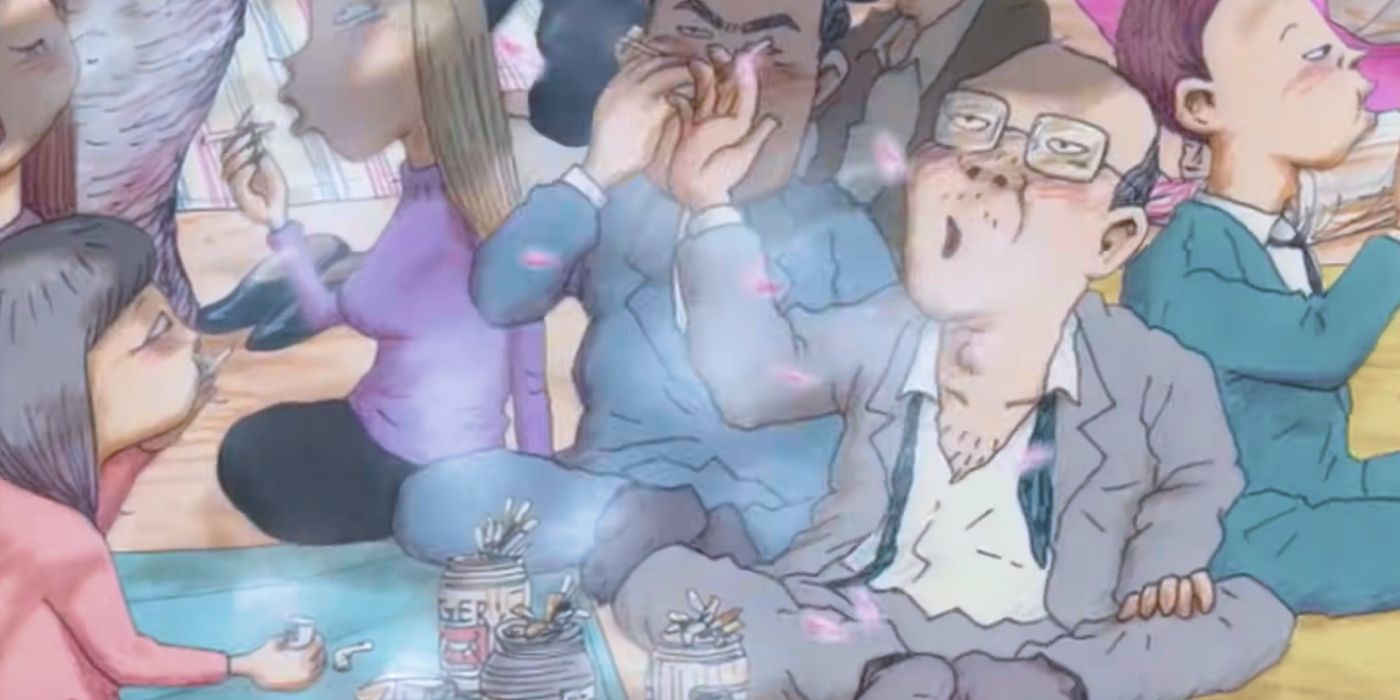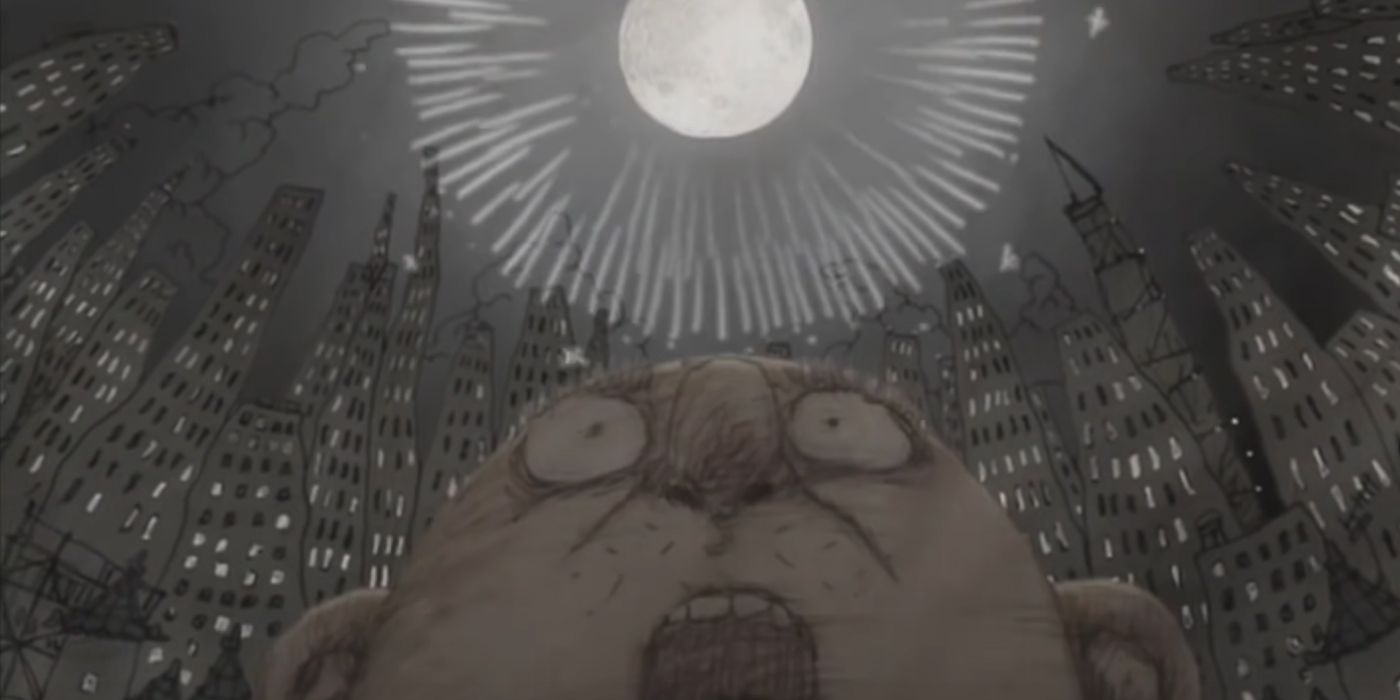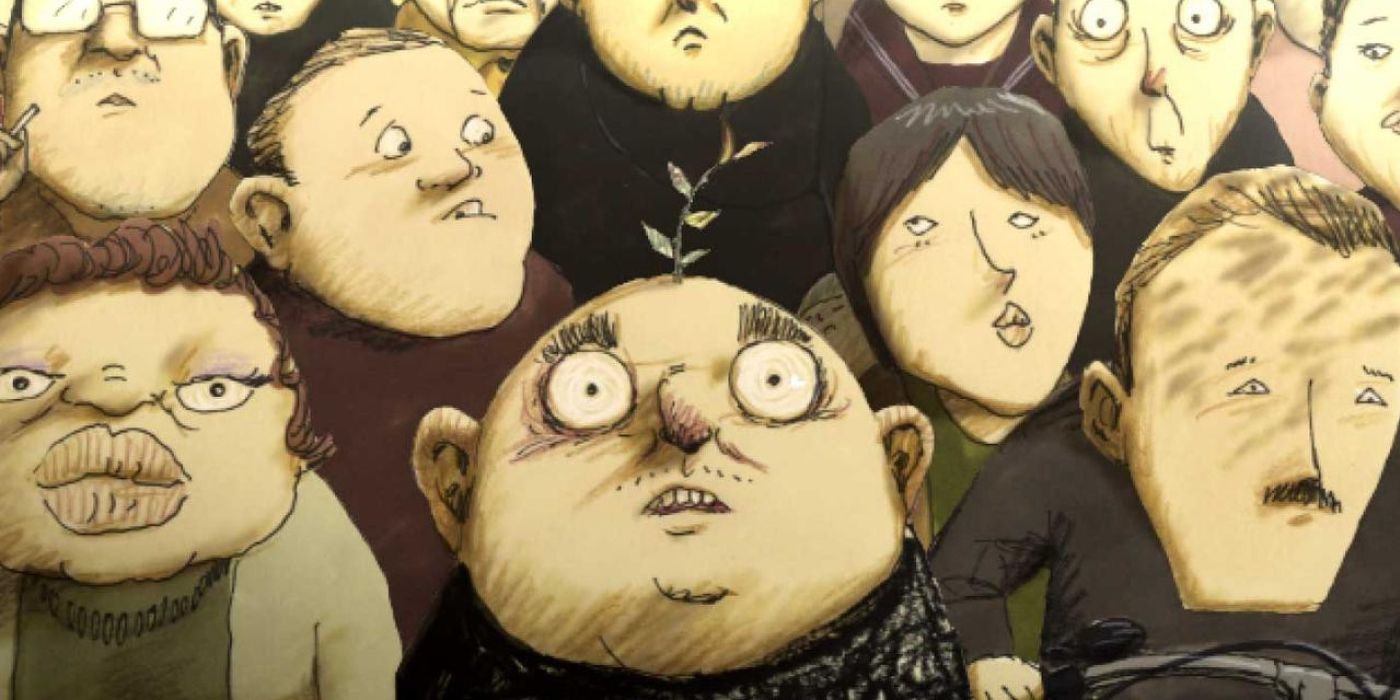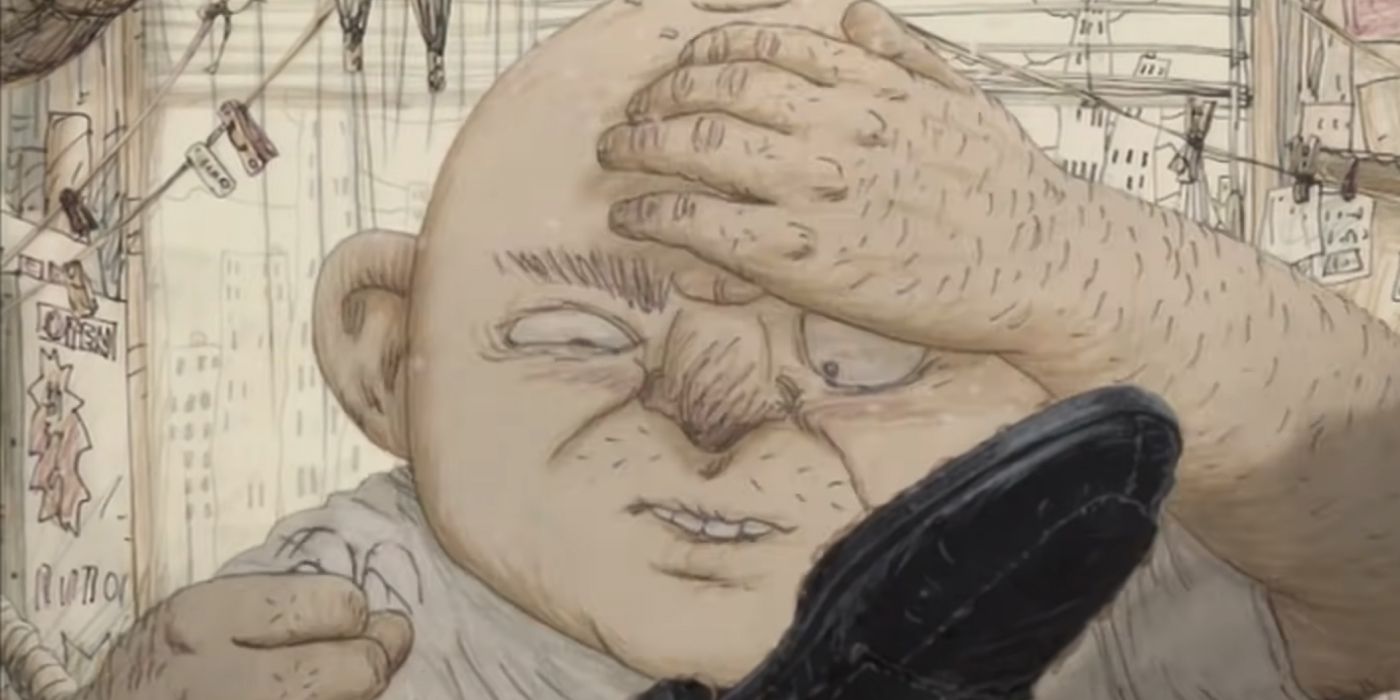Mt. Head is a short animated film directed by Koji Yamamura that reinterprets a traditional Japanese rakugo, Atama-Yama, by setting it in contemporary Tokyo. The ONA won the 2003 Annecy International Animated Film Festival Grand Prix for Best Short Film and the Excellence Award at the 6th Japan Media Arts Festival.
The tale harks back to the classic traditions of rakugo, which is a form of yose (Japanese spoken-word theater), whereby a narrator dictates the story in a lyrical and comedic fashion. The mix of music, detailed animation and its powerful cautionary message is an entertaining watch and will likely have viewers scratching their heads in more ways than one.
What Is the Plot of Mt. Head?
Mt. Head follows the life of a stingy man who saves everything that he finds. He wanders the streets of Tokyo looking for anything that he believes is still useable and hoards these items in his house. The penny-pinching man appears to have no shame and allows his house to pile up with rubbish from the surrounding area. His miserly attitude eventually leads him to eat the pips of cherries that he finds on the floor, as he is unwilling to waste even the most disposable of things.
This causes a bud to sprout from his head, and despite his best efforts to cut it each morning, it continues to grow back again and again. Eventually, the man decides that it’s "a waste to even think about it" and allows the bizarre phenomenon to persist without his tampering. Onlookers jeer and laugh at the man’s rather odd appearance, yet he remains unwilling to alter his behavior and allows the developing bud to form into a small tree.
If Mt. Head’s narrative wasn’t already strange enough, things get even weirder at the halfway mark of the film. As the tree on top of the man’s head blooms with cherry blossoms, a gathering of small human beings begins to have a picnic on the site. Salarymen and office girls eat from bento boxes, smoke, drink and sing karaoke while the protagonist is trying to peacefully eat his ramen. This enrages the man so much that he rips the tree from his head in the hope that it will prevent anyone from coming back.
However, the hole where the cherry tree used to be starts to collect water as the rain begins to fall. This draws in more visitors, who fish, swim and set off fireworks from the top of the head. Ultimately, the recent events that have taken place become too much for the middle-aged man to bear, sending him spiraling into a state of madness. After running to the outskirts of the city, he finds a pool of water. Upon looking into it, he sees himself standing on his own head, looking down into the hole where the cherry tree once rested. Finally, the man throws himself into his head pond and dies.
What Is Rakugo?
Rakugo is a form of verbal entertainment told by a single storyteller (rakugoka) who sits on a raised platform (kōza) in front of an audience. The rakugoka only uses a paper fan (sensu), a small cloth (tenugui) and their ability to alter their voice to tell the story. This is all done while sitting in the seiza position, a traditional Japanese kneeling pose, from which they use their props, slight turns of their head and changes in pitch and tone to indicate the difference between the two (or more) characters in the tale.
Like humorous genres elsewhere, Edo Rakugo often critiques society… The tales point out the shortcomings of people with superior status, such as samurai or know-it-all retirees, and at times display the superior insight of people who would likely have been the butt of jokes or scorn in real life, such as Yataro, the fool. - Lorie Brau, "Rakugo Performing Comedy and Cultural Heritage in Contemporary Tokyo," 2008.
This form of entertainment began around 1670 in the Edo period (1603-1867); however, the tradition can be traced back as far as the Heian period (794-1185), in which Buddhist monks recounted humorous stories to preach their faith. The art form still endures to this day, in which storytellers perform classic rakugo, passed down from master to disciple through the years, or newer works developed from the twentieth century onward.
What Themes Are Explored in Mt. Head?
At its core, Mt. Head is a comedic story about a man who has failed to grasp what really matters in life. Like many rakugo of this nature, the audience is encouraged to laugh and gain pleasure from the protagonist's despair as their poor actions lead from one bad event to another. However, this short holds a cautionary message that is being told for the benefit of the viewer and society.
The man holds several characteristics that are distinctly undesirable. He is a scrooge who takes and consumes anything he finds, regardless of how unappetizing or unpleasant it should be for him to do so. His greed causes him to leave his house in a state of disarray, making it not only a health hazard for himself but those around him. The man's extreme focus on not wasting a single thing has ultimately led him to disregard the one thing that matters in life: caring for others and the world around him.
While Mt. Head provides some laughs at this poor man's expense, it's also a warning to everyone watching on how not to live their lives. The protagonist's death arises from his egotism and self-neglect. After consuming everything around him, he has nothing left to waste except himself and ends up drowning in his own misery. Like many comedic acts, Mt. Head turns the mirror back on its audience and asks them to consider the actions of those around them, society as a whole and even themselves in a mix of humor and dark realism.
Koji Yamamura paints a strange and surreal world that is just as entertaining as it is informative. Mt. Head’s wonderful mix of comedy, music and important messages on how to live a decent life will undoubtedly keep people engaged throughout its 10-minute runtime, leaving them questioning what’s truly going on atop this man's head.

